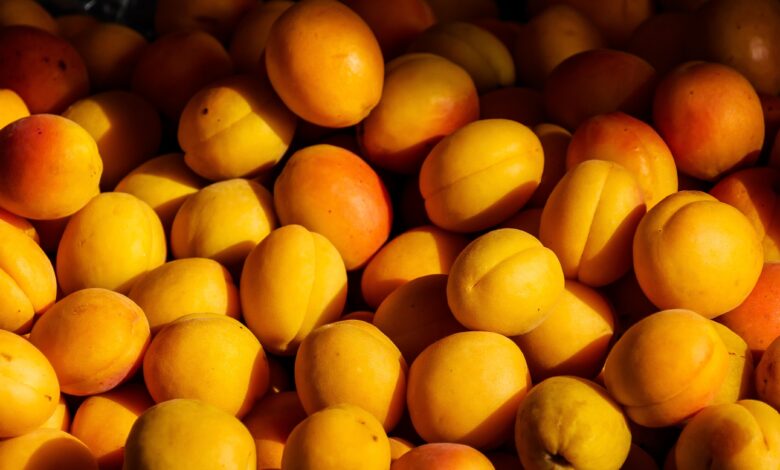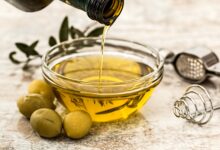Composition of apricot oil and its uses

Apricot oil identity card
Common name of vegetable oil : Apricot, Apricot Kernel
Producer tree: Apricot
Botanical name : Prunus armeniaca
Botanical family : Rosaceae
Origin (country where the vegetable oil is grown): Turkey, all countries of the Mediterranean basin
Part of the plant extracted : Almond extracted from the kernel
Oxidative potential : Not very sensitive
Average price : From 80 to 150 euros/litre
Prunus armeniaca means plum of Armenia . The apricot and its cousin the peach are the two prunus native to China where they have been cultivated for more than 2000 years. If traces of the apricot tree are found in Armenia in the 1st century BC, it was introduced only late in France. According to some sources, apricot oil has also been used in Tibet for several centuries.
Turkey remains today the leading apricot producer.
Organoleptic properties of apricot oil
Botanical and organoleptic particularities are likely to change depending on production conditions (country, sunshine, organic production, etc.).
Colour : orange-yellow
Smell : discreet, similar to bitter almond
Texture : fluid, greasy
Taste : not very pronounced
Composition of apricot oil
The composition of vegetable oil is strongly influenced by production conditions. To ensure its quality, it is recommended to select an extra virgin oil, obtained by cold pressing, ideally of biological origin.
To find out more about nutritional qualities (types of vitamins, concept of unsaturated, saturated and trans fatty acids).
Fatty acid composition
Monounsaturated FA: 60 to 65% oleic (Omega9) Polyunsaturated FA
: 25 to 30% linoleic (Omega6)
Saturated FA : palmitic acid 5 to 8%
Other active constituents
Vitamins: A, E
Other constituents: phytosterols, triglycerides
Ways to use apricot oil
Cutaneous application
Anointing, massage, local application
Possible combination with essential oils. Apricot oil is an excellent excipient.
Nutritional use
Orally
This document distinguishes the cutaneous and nutritional uses of vegetable oil according to the desired benefits. Nevertheless, in certain cases, the absorption of a vegetable oil orally can influence the improvement of dermatological affections. Similarly, it is possible to wonder about the effectiveness of a vegetable oil used cutaneously on a physical pathology induced by a psycho-emotional or nervous imbalance.
Cosmetic aspect of apricot oil
Apricot oil turns out to be an excellent massage oil and a good base in aromatherapy (especially for adults).
Main benefits
On a cosmetic level (for cutaneous use):
- antioxidant
- Emollient, soothing
- Nourishing
- Regenerating, revitalizing (toning)
- Protective (improves the barrier function of the skin and promotes microcirculation)
Other Benefits
- Photoprotectrice
- Skin anti-inflammatory
- Penetrating
Uses and synergies of apricot vegetable oil
Cutaneous indications (skin, hair, nails)
- Light burn (after solar)
- Dry or damaged hair and scalp
- Crevasse
- Dartre
- Itching
- Make-up removal (avoid the eye area)
- Dryness (hands, body, hair, nails)
- Eczema
- Chap
- Irritation
- Dull, dull, tired skin
- Withered skin
- Sensitive skin
- Psoriasis
- Wrinkle (in prevention)
- Skin redness
- Sun (light sunscreen)
- stretch marks
- Skin aging (in prevention)
Practical tips
In cutaneous use, it is possible to make apricot oil even more penetrating by combining it with a vegetable oil such as jojoba (one of the most fluid oils). Associated with essential oils, this mixture constitutes an excellent massage oil.
Apricot oil can be used as a base for a day or night cream.
Anti-contracture massage oil
Mix in an airtight 100ml bottle:
- 60ml apricot oil
- 20ml jojoba wax
- 10ml calophylle oil (or tamanu)
- Complete with the following essential oils*:
- 2ml lavender
- 2ml de katafray
- 1ml wintergreen
Apply by massage on contracted areas.
Reusable mix.
Storage method: away from heat and light
Shelf life: depending on the expiry dates of vegetable oils and essential oils
* As a precaution, it is preferable to avoid this mixture in pregnant women, children under 6 and people allergic to aspirin .
Care oil for dull skin
Mix in an airtight 50ml bottle:
- 25ml apricot oil
- 10ml jojoba wax
- 5ml avocado oil
- 5ml callophyll oil
- 5ml rosehip oil
Complete with the following essential oils*:
- 10 drops of jasmine absolute
- 2 drops of ylang-ylang
- 3 drops of rosewod
Apply to skin previously moistened with a yarrow or cornflower hydrosol
Reusable mixture.
Storage method: away from heat and light
Shelf life: depending on the expiry dates of the vegetable oils
* Due to the presence of essential oils, it is preferable to avoid this mixture for women pregnant and breastfeeding and in children under 6 years of age .
Nutritional aspect of apricot oil
Traditionally, Chinese medicine recommended apricot kernel for ailments such as: cough, sore throat, asthma, constipation.
Subsequently, it was said to have anti-cancer properties that have not been confirmed by any serious study. Indeed, the almonds of the stones (bitter almonds) are rich in nitrolosides (1). However, apricot oil is being studied in the form of a nutritional supplement in the context of anti-cancer treatments, in order to improve the immune system (2). At the same time, some sources urge caution regarding the consumption of apricot kernels, due to the presence of cyanide. Again, this claim is controversial.
Finally, with a few exceptions (3)(4), apricot oil benefits from few studies on its nutritional benefits.
Precautions for using apricot oil
Apricot oil is very stable and keeps well.
Due to the presence of cyanide, some sources urge caution regarding its consumption. As a preventive measure, it is preferable to limit its consumption to a single teaspoon per day.
It is recommended not to heat apricot oil. On the other hand, it can be incorporated into a salad or a pastry.
- bridge
- Allergies (overview)
- Achluophobia : all about the fear of the dark
- At what age can you do bodybuilding?
- Fatigue in the morning: causes and remedies








